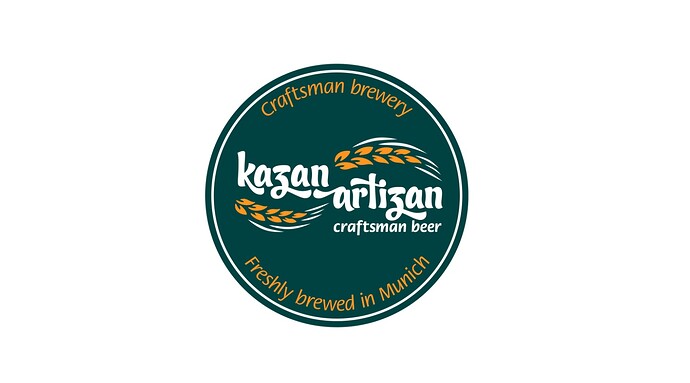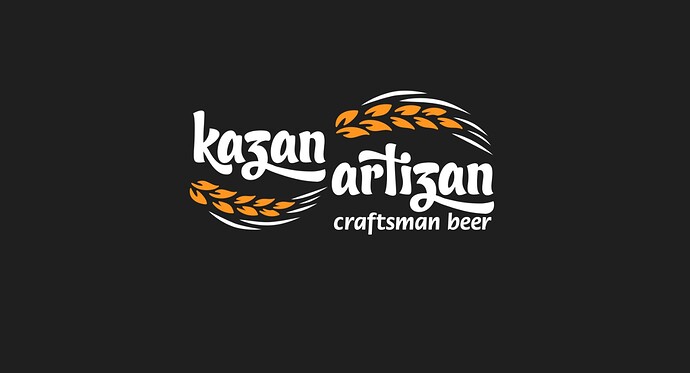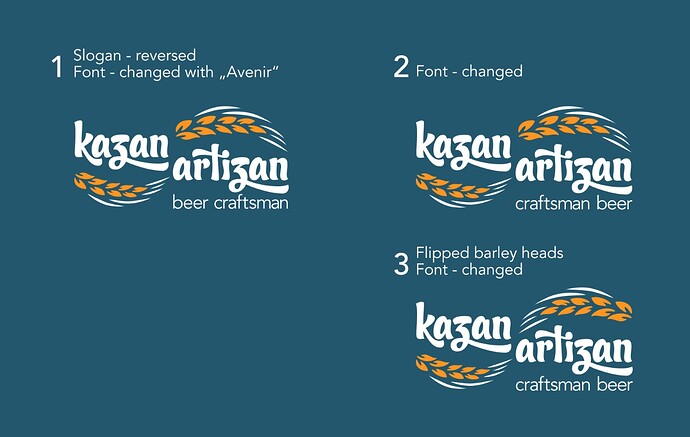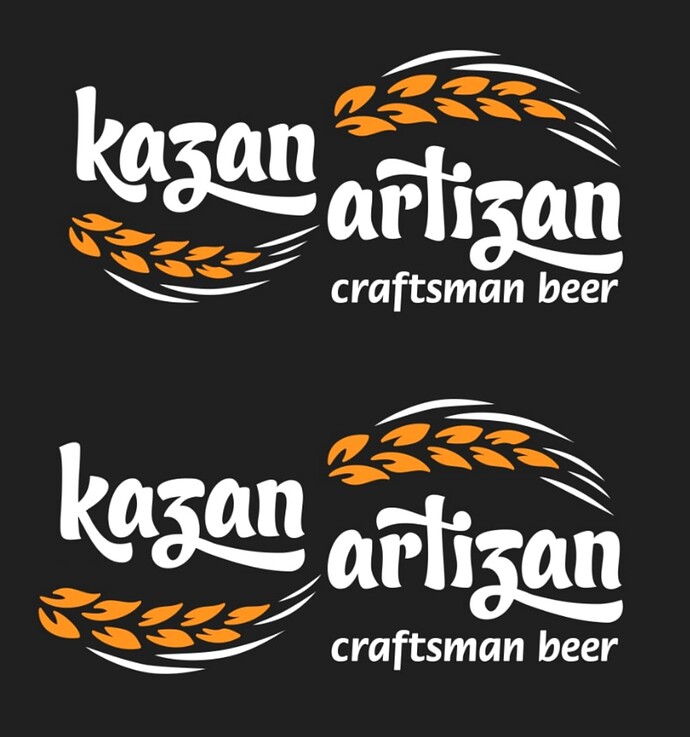Inadvertent stairstep arrangements can create visual problems — especially with typography — but in this instance, there is no visual glitch, and your teacher is mistaken. Of course, the teacher is the client, and your grade is your payment. Unfortunately, you can’t simply ignore them, which is no different than in the professional world.
——————
The forum rules discourage redoing people’s artwork unless the best way to explain the changes is through visual means. I think this is one of those instances.
I like your logo a lot, and we’re getting into the realm of personal opinions about small changes to what’s already very good. That being the case, I’ll throw in my small changes.
The top example below is yours. The bottom one reflects the small changes I would make if I were you.
The word Kazan is shorter than Artizan. Since you wanted the heads of barley to extend across each word, you’ve made the bottom head of barley smaller. This workaround doesn’t quite work, but a series of smaller changes would enable you to keep both heads the same size.
First, I would make the heads the same size, then remove the one beard hair from the bottom head.
Second, I would add slightly more horizontal space between the k and the a.
Third, lower the leg of the k just a little to add more vertical distance between it and the a.
Fourth, Stretch horizontally the word kazan ever so slightly.
Fifth, Allow the bottom head of barley to protrude to the left beyond the edge of the k. They don’t need to line up perfectly.
All these little cheats are less noticeable than the one big cheat of making the barley head smaller.
In addition, keeping the barley heads the same size extends the bottom head a bit lower, which enables you to move craftsman beer a little lower, creating a bit more leading and room to breathe between artizan and craftsman beer. This also creates room for a visually better alignment between the baseline of craftsman beer and the bottom of the head of barley. (The head of barley needs to be slightly lower than craftsman beer to counter the optical illusion of having both perfectly aligned.)




